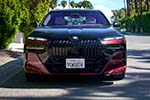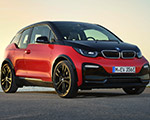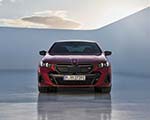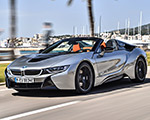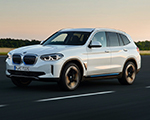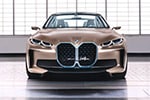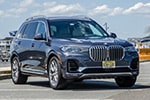When BMW first revealed the Neue Klasse, it promised more than just a new generation of electric cars. It pitched a complete rethinking of how vehicles should be developed, manufactured, and recycled in the face of real climate pressure. The new BMW iX3, set to begin production in November 2025, is the first vehicle to come out of that promise—and it makes good on more than a few of the bold claims.
At a closed-door media workshop in July, BMW’s sustainability and product experts walked a small group of journalists through the core sustainability principles baked into the iX3. It wasn’t just about battery range or energy consumption. The conversation focused instead on carbon footprint, raw materials, supply chain changes, and long-term recyclability.
From Carbon Targets to Real Reductions
BMW’s long-term climate plan is straightforward on paper, though anything but easy in practice. The company aims to reach full net-zero emissions by 2050 and to cut 40 million tons of CO₂e by 2030 compared to its 2019 baseline. That baseline figure—150 million tons—is the total carbon footprint for BMW’s full operations and vehicle lifecycle emissions at that point in time.
To reach that goal, BMW has set what it calls “near-term” targets, and according to the latest financial reports and data presented during the workshop, they’re halfway there. A major portion of that progress is tied directly to rethinking how the company sources materials and builds cars. The iX3 is the first model where BMW’s new sustainability strategy shows up across every stage of the vehicle lifecycle—from upstream materials to dismantling at end-of-life.
The Supply Chain is the Battleground
One of the biggest takeaways from the session is that BMW’s sustainability work isn’t confined to tailpipe emissions—or even to powertrain efficiency. The real leverage for a battery electric vehicle lies upstream. As part of the development process, specific sustainability measures enabled a reduction of approximately 35% CO₂e in the supply chain. BMW has worked with over 2,700 Tier 1 suppliers to reduce emissions from sourcing and component production. That includes requiring suppliers to use renewable energy wherever possible and expanding the use of secondary raw materials.
Some of the most CO₂e-intensive components, like battery cells, aluminum castings, steel components and thermoplastics, have been overhauled. The new Gen6 battery, for instance, is produced with a secondary raw material content of 50% cobalt, lithium, and nickel each. Thanks to optimized production of its anode and cathode materials—both now powered by green electricity—BMW has managed to reduce CO₂e emissions per watt-hour by 42% compared to the previous Gen5 battery used in the outgoing iX3.
Circular Design: From Fishing Nets to thermoplastic automotive components
BMW’s move toward a circular economy is best seen in the iX3’s materials. It starts with the frunk—the storage compartment under the hood—made partly from recycled maritime plastic, including discarded fishing nets and ropes. The same applies to the engine compartment cover. In both cases, 30% of the content is recycled maritime plastic, preventing these materials from potentially dumped in the ocean.
But that’s just one example. The aluminum wheel carriers and swivel bearings use 80% secondary aluminum. The cast wheels are made from 70% secondary raw material. Inside the cabin, BMW has developed what it calls the Econeer upholstery: a seat trim where the textile surface, the fleece backing and even the adhesive layer are all made from PET. It’s therefore a mono-material approach designed to simplify recycling at the end of the vehicle’s life. In addition, BMW uses 100% recycled PET for the base material of the textile yarn.
The overarching idea is summed up in BMW’s “Design for Circularity” framework. The concept follows three pillars: prioritize secondary materials, simplify and standardize material choices, and build components to be dismantled quickly and cleanly. For a modern automaker dealing with thousands of parts and materials, this is no small feat. But the iX3 shows that it’s possible to apply the principle across a production vehicle—at scale.
Assembly Without Fossil Fuels
The BMW iX3 will be built in Hungary at BMW’s newest facility: the Debrecen plant. Unlike its older siblings, this factory is designed to operate entirely without fossil fuels. That includes the paint shop, which has traditionally been one of the biggest sources of factory emissions. In Debrecen, ovens are powered by stored thermal energy, and solar panels on-site can supply up to 25% of the facility’s electricity. The rest comes from external renewable sources.
According to BMW, each iX3 built in Debrecen will account for just 0.1 tons of CO₂e emissions in production—roughly two-thirds less than comparable vehicles built at legacy plants. The company has paired its production strategy with external verification. All product carbon footprint numbers—including materials, production, and use phase—are certified by Germany’s TÜV (Technical Inspection Association). The full data is made public and accessible to owners through the My BMW app.
How Long Until the iX3 Pulls Ahead?
While building a car emits a large upfront amount of CO₂e, especially when battery production is involved, BMW says the iX3 reaches its emissions break-even point quickly. On Europe’s current electricity grid, the iX3 outperforms a comparable combustion-engine vehicle after about 21,500 kilometers of driving. If the vehicle is charged exclusively with renewable electricity, that break-even point drops to 17,500 kilometers.
Either way, that’s less than a year of use for most drivers. And once you pass that point, the emissions gap continues to widen in favor of the electric iX3.
What Happens to the Battery?
The elephant in the room, as with many EVs, is what happens when the battery reaches the end of its useful life. During the workshop, BMW’s team addressed the question head-on. While they’re laying the groundwork for second-life battery applications, their primary focus right now is scaling up recycling capacity. The company is working with partners to ensure that key raw materials—particularly lithium, cobalt, and nickel—can be recovered and fed back into the production loop.
In other words, battery reuse and closed-loop recycling are on the horizon, but not yet running at scale. It’s a space BMW knows it must invest in, especially as battery returns increase over the next decade.
A Step Toward the Bigger Picture
It would be easy to dismiss all of this as a single model’s worth of progress. But the iX3 shows what’s possible when sustainability isn’t tacked on at the end of development but treated as a core design requirement from the start. We will learn more about the iX3’s sustainability plan in September when we’ll have a chance to visit the Debrecent plant.












































